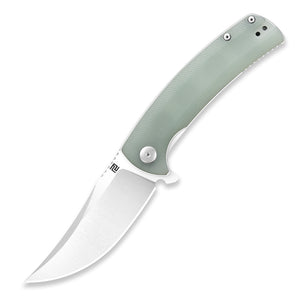Knife flipping is a thrilling skill that requires precision, practice, and most importantly, safety. Whether you are a beginner or an experienced flipper, it is crucial to prioritize safety to avoid accidents and injuries. In this article, we will explore essential safety tips and techniques for mastering knife flipping skills.

1. Choosing the Right Knife
When it comes to knife flipping, selecting the right knife is paramount. Look for a knife that is specifically designed for flipping, with a balanced weight distribution and a secure grip. Avoid using kitchen knives or any other sharp objects that are not intended for flipping. It is also important to ensure that the knife is in good condition, with a sturdy handle and a sharp blade.
Remember, safety starts with the right equipment, so invest in a high-quality knife that meets your flipping needs.
2. Mastering the Grip
The grip is a fundamental aspect of knife flipping. It not only enhances your control over the knife but also minimizes the risk of accidents. The most common grip technique used in knife flipping is the "pinch grip." This involves holding the knife between your thumb and index finger, with the handle resting on the base of your palm.
Practice your grip technique regularly to develop muscle memory and improve your flipping skills. Experiment with different grips to find the one that feels most comfortable and secure for you.
3. Practicing in a Safe Environment
Knife flipping should always be practiced in a safe and controlled environment. Find a spacious area with a non-slip surface, away from any distractions or obstacles. Clear the space of any objects that could potentially interfere with your flips.
It is also advisable to use a cutting board or a soft mat to prevent the knife from damaging the surface or bouncing off unpredictably. This will not only protect your surroundings but also reduce the risk of accidents.
4. Starting with Basic Flips
Mastering knife flipping skills requires patience and gradual progression. Start with basic flips before attempting more advanced techniques. Begin by practicing simple vertical flips, where you flip the knife in a straight up-and-down motion.
Once you feel comfortable with vertical flips, you can move on to horizontal flips or even aerial tricks. Remember to always maintain a firm grip on the knife and keep your fingers away from the blade.
It is crucial to practice each flip repeatedly until you have full control and confidence. Rushing into complex flips without mastering the basics can lead to accidents and injuries.
By following these safety tips and techniques, you can enjoy the art of knife flipping while minimizing the risk of accidents. Remember to always prioritize safety, invest in the right equipment, and practice in a controlled environment.






